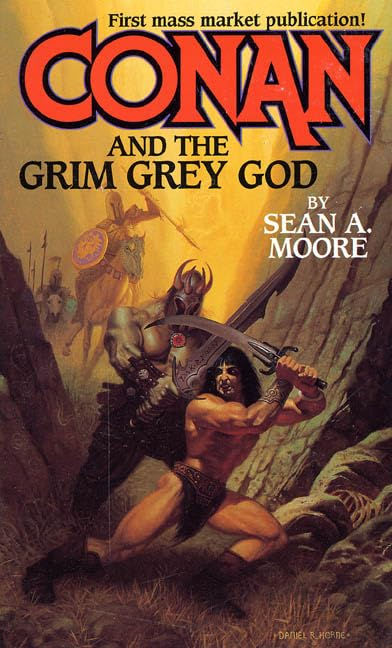Conan in Black Canaan
- Greg O'Driscoll
- Feb 16, 2024
- 4 min read

Just as one might think the Cimmerian was done with all these delays and side quests, leaving behind the Hyborian version of the Valley of Iskander, our hero rides straight into Roy Thomas's Conan-ification of one of Howard's more racist tales, Black Canaan. Originally set amid the smoldering tensions of the post-Civil War South, where little has changed and the descendants of slave owners still lord it over nearby, separate but unequal communities of freed slaves, Black Canaan was a written manifestation of the fear white southerners had of black uprisings that still lingered even into the 20th century.
Thomas had balls to adapt this one, I'll give him that. Though he deliberately pruned it of its more uncomfortable components, it still treads a certain uneasy line. In the original, Kirby Buckner races home after a old colored woman warns him of trouble in the town of Black Canaan. Along the way he encounters a mysterious "mulatto half-breed" woman of great beauty and (of course) sinister evil. She enthralls him and puts Buckner under her spell. He will come when she calls him to the Dance of the Skull where he will be a sacrifice to their snake god Damballah.
Not much of the Conan version is terribly different. Conan stands in for Kirby Buckner and, instead of racing back at the first word of black men potentially breaking into violence, he is racing back to Harakht to reunite with Belit. Like Buckner he runs afoul of the mysterious witch-woman and a failed ambush. Meeting the witch-woman's three brothers waiting in ambush evokes echos of the Howard classic The Frost Giant's Daughter.
Last issue, the reader had been left to decide for themselves if Conan had been unfaithful to Belit with Bardylis of Iskander, but when nearly seduced by Sabia the witch, Conan recoils, suddenly much more determined to be faithful to his she-pirate.

This smacks a little of Conan doth protest too much. Buckner's irresistible pull toward the biracial witch Salome in Black Canaan is very thinly lampshaded by the explanation of ju-ju magic. In reality, it is a conflicted metaphor for the attraction white southerners felt toward black women. No matter how beautiful one might be, dark-skinned women have to be somehow "evil", and a white man's attraction to them must be unnatural or the result of something improper.
Conan could be reasonably expected to have no such qualms, though I cannot recall if I had ever seen him with a woman of color prior to this issue. Thomas even has Conan go out of his way to state that he picks his allies based on "other things than skin color these days." Given the variety of women he is with in later adventures, one imagines that philosophy also extends to lovers, but his sudden recoiling from Sabia's lips seems somehow suspect given the material from which this story is adapted. I mean, Conan macks on a surprising number of sorceresses and supernatural beings, but he's drawing the line with Sabia?

Another added shade of irony (pardon the pun) is the white southerners being replaced with dusky Stygians. They are only slightly less dark than the Kushites they are at war with, yet they seem to think Conan is their natural ally, given his similarly lighter skin.
Given his antipathy for Stygians in earlier issues and his ongoing alliance with the Black Corsairs, it is odd to see Conan fall in with the Stygians, naturally taking a leadership role the same way Buckner does with the anxious white farmers and landowners of Black Canaan. Of course, the fears of the white rulers have to be made justified in some fashion, so it isn't just an uprising they fear but also the sorcery of the black people's enigmatic leader, Saul Stark in Black Canaan and Toroa in this issue.

Perhaps this is all just a means to an end for Conan to survive his trip through the swamp and get back to Harakht alive. Even so, I'm not sure this story is the best look for the big guy. What does look good is the art. Chaykin's pencils are improving by the issue, sometimes by the page and Chan's inks keep things pretty consistent with the previous Buscema vibe. The cover is still Buscema and Chan and it is really nice with Sabia sensual figure taking center stage, but apparently the colorist didn't get the memo and rendered her as a white woman. Just yet another odd touch in this odd adaptation. I don't have the second issue of this adventure in the current pile of comics I am going through and I don't know that I will dig it up for the sake of completeness. Black Canaan was never my favorite Howard tale. It isn't as bad as, say, Medusa's Coil by Lovecraft, but Black Canaan uses race with less nuance and more stereotypical tribalism (on both sides of the color line) than most of Howard's other adventures.



Comments